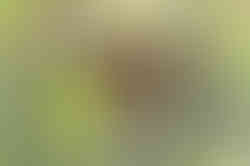Seychelles & Comoros
Short tour to some of the most endemic-rich small islands in the Indian Ocean! Over 40 specialties expected, including the monotypic Humblot's Flycatcher, Comoros Blue Pigeon, Comoros Blue Vanga, Mayotte Sunbird, Karthala White-eye, Moheli Scops Owl, Anjouan Scops Owl, Seychelles Scops Owl, Seychelles Kestrel, Seychelles Blue Pigeon, and Seychelles Paradise Flycatcher. We will also enjoy many sightings of different Cuckoo-roller subspecies, the delightful Crab-plover, and magnificent White-tailed Tropicbirds amid some lovely tropical island scenery!
Next Dates
Accommodation:
Some basic guesthouses in the Comoros (Moheli and Anjouan), but otherwise comfortable accommodation. No camping required!
Walking difficulty:
Some moderately strenuous walks to get to higher elevations on Grande Comore and Moheli. The remainder of the tour is easy.
Tour cost includes:
All accommodation, main meals, drinking water, internal flights (as stated in itinerary), overland transport, tips to local drivers and guides, travel permits, entrance fees, and guide fees.
Tour cost excludes:
Flights before and after the tour start/end, visa, travel insurance, tips to tour leaders, laundry, drinks, and other items of a personal nature.






Day 1: Arrivals into Grande Comore International Airport (HAH) and transfer to guesthouse in Moroni, our base for the next three nights. We may have our first attempt for Karthala Scops Owl tonight, the first of eleven Endangered and declining Comoros/Seychelles endemics that we will be hoping to see during this tour.
Day 2-3: Most of our time will be spent exploring Mount Karthala by 4WD vehicles. This is the best site to find most of the single-island endemics: Grand Comoro Bulbul, Grand Comoro Brush Warbler, Karthala White-eye, Kirk’s White-eye, plus the intriguing Humblot’s Flycatcher, which is in its own genus and most closely related to wheatears! The Critically Endangered Grand Comoro Drongo is usually found in a different area, so we will of course make the required detours to find it. These days will also provide our first chances for the beautiful Comoros Blue Pigeon, plus Comoros Olive Pigeon, Comoros Black Parrot, Comoros Cuckooshrike, Comoros Thrush, Comoros Fody, and Humblot’s Sunbird. Of course, there are several endemic subspecies we will watch out for, including Madagascar Spinetail, Greater Vasa Parrot, Malagasy Turtle Dove, Cuckoo-roller, Malagasy Paradise Flycatcher, Malagasy Green Sunbird, and “Grand Comoro” African Stonechat. Nights in Moroni.
Day 4-5: After a morning transfer to Moheli on Day 4, we will set to work on another set of specialties. Moheli Scops Owl, Moheli Bulbul, Moheli Brush Warbler, and Moheli White-eye are relatively easy to find, so the declining Endangered duo of Comoros Green Pigeon and Comoros Blue Vanga will be our main targets, both of which are now seemingly extinct from all other islands in their historic range. The Moheli form of Comoros Fody and Comoros Thrush will hopefully be encountered early on, and then those opting to take a much steeper trek on our second day will be able to search for the very rare endemic subspecies of Comoros Cuckooshrike and Malagasy Brush Warbler. If we have time for seawatching, there is a chance of scoping up the endemic breeding subspecies of Persian Shearwater. Night on Moheli.
Day 6: Transfer to Anjouan, arriving late for our first attempt at Anjouan Scops Owl this evening.
Day 7: Today will be focused on Anjouan Sunbird, Anjouan Brush Warbler, and Anjouan White-eye, with another supporting cast of interesting subspecies: Malagasy Kingfisher, Comoros Fody, Crested Drongo, and the endemic scaly form of Comoros Thrush, which is probably one of the better split candidates for this region! Night on Anjouan.
Day 8: Early transfer to the well-developed French island of Mayotte, where we will look for our final Comoros endemics: Mayotte Scops Owl, Mayotte Drongo, Mayotte Sunbird, and Mayotte White-eye. Frances’s Sparrowhawk and Cuckoo-roller are pleasantly common here! Night on Mayotte.
Day 9: Backup day - will be used on one of the previous islands, depending on flight schedules.
Day 10: Final morning birding on Mayotte before our flights onwards to Mahé in the Seychelles, arriving in time for our first attempt at the Critically Endangered and unfortunately still declining Seychelles Scops Owl this evening.
Day 11: A welcome conclusion to the tour after the previous days of tough birding in the Comoros, the Seychelles is relaxing and enjoyable. As close to a holiday as we get on our regular birding tours! The threatened Seychelles Kestrel and Seychelles White-eye are probably the two scarcest birds to find, but we should be able to locate them without too much trouble, among other endemics like Seychelles Sunbird, Seychelles Bulbul, Seychelles Blue Pigeon, and Seychelles Swiftlet. Enjoying the local White-tailed Tropicbirds and Crab-plovers will certainly be on our wishlist if we succeed early on with the endemics! Night on Mahé.
Day 12: Taking an early flight over to the adjacent island of Praslin, some initial forest birding to look for Seychelles Black Parrot will be followed by a boat trip to Cousin Island, where we can marvel at the number of breeding Lesser Noddy, Brown Noddy, and White Tern. Seychelles Magpie Robin, Seychelles Fody, and Seychelles Warbler will be our focus, however, this being the best place to see these three threatened species. Afterwards, we will continue to the island of La Digue for an appointment with one of the star endemics: Seychelles Paradise Flycatcher. Night on Praslin.
Day 13: We will use the morning to search for any species we may have missed the previous day, or otherwise take a trip to Aride Island for Great Frigatebird, Lesser Frigatebird, and Tropical Shearwater. Afternoon flight back to Mahé for overnight.
Day 14: The tour ends today with flights out from the Seychelles International Airport (SEZ).





















